Jean-Claude Crivello
ICMPE
Data-Driven Score-Based Models for Generating Stable Structures with Adaptive Crystal Cells
Oct 16, 2023Abstract:The discovery of new functional and stable materials is a big challenge due to its complexity. This work aims at the generation of new crystal structures with desired properties, such as chemical stability and specified chemical composition, by using machine learning generative models. Compared to the generation of molecules, crystal structures pose new difficulties arising from the periodic nature of the crystal and from the specific symmetry constraints related to the space group. In this work, score-based probabilistic models based on annealed Langevin dynamics, which have shown excellent performance in various applications, are adapted to the task of crystal generation. The novelty of the presented approach resides in the fact that the lattice of the crystal cell is not fixed. During the training of the model, the lattice is learned from the available data, whereas during the sampling of a new chemical structure, two denoising processes are used in parallel to generate the lattice along the generation of the atomic positions. A multigraph crystal representation is introduced that respects symmetry constraints, yielding computational advantages and a better quality of the sampled structures. We show that our model is capable of generating new candidate structures in any chosen chemical system and crystal group without any additional training. To illustrate the functionality of the proposed method, a comparison of our model to other recent generative models, based on descriptor-based metrics, is provided.
Supervised deep learning prediction of the formation enthalpy of the full set of configurations in complex phases: the $σ-$phase as an example
Nov 21, 2020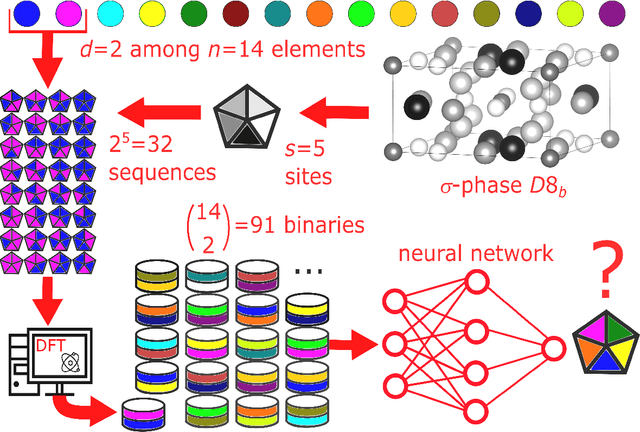
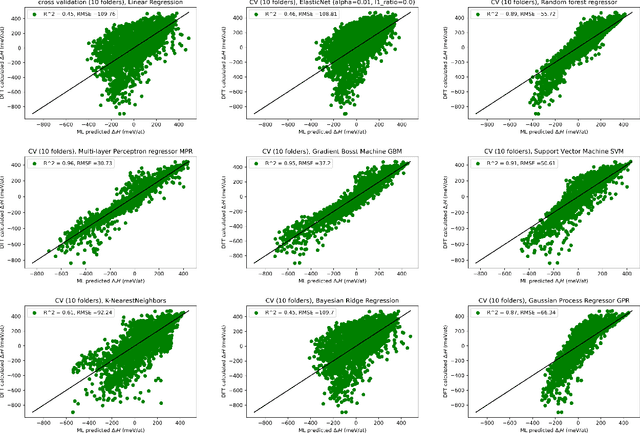
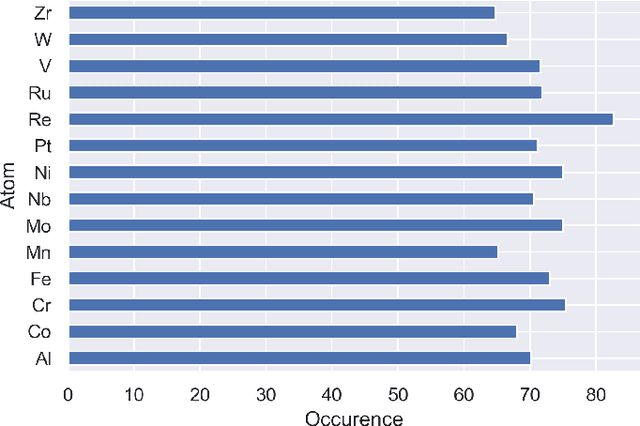
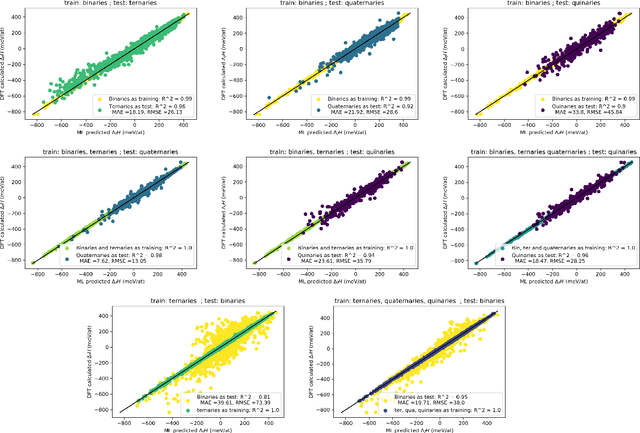
Abstract:Machine learning (ML) methods are becoming integral to scientific inquiry in numerous disciplines, such as material sciences. In this manuscript, we demonstrate how ML can be used to predict several properties in solid-state chemistry, in particular the heat of formation of a given complex crystallographic phase (here the $\sigma-$phase, $tP30$, $D8_{b}$). Based on an independent and unprecedented large first principles dataset containing about 10,000 $\sigma-$compounds with $n=14$ different elements, we used a supervised learning approach, to predict all the $\sim$500,000 possible configurations within a mean absolute error of 23 meV/at ($\sim$2 kJ.mol$^{-1}$) on the heat of formation and $\sim$0.06 Ang. on the tetragonal cell parameters. We showed that neural network regression algorithms provide a significant improvement in accuracy of the predicted output compared to traditional regression techniques. Adding descriptors having physical nature (atomic radius, number of valence electrons) improves the learning precision. Based on our analysis, the training database composed of the only binary-compositions plays a major role in predicting the higher degree system configurations. Our result opens a broad avenue to efficient high-throughput investigations of the combinatorial binary calculation for multicomponent prediction of a complex phase.
CrystalGAN: Learning to Discover Crystallographic Structures with Generative Adversarial Networks
Oct 26, 2018
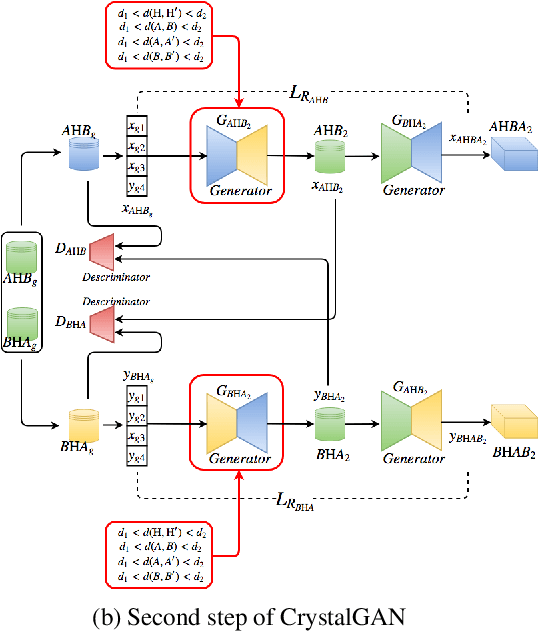
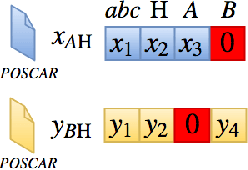

Abstract:Our main motivation is to propose an efficient approach to generate novel multi-element stable chemical compounds that can be used in real world applications. This task can be formulated as a combinatorial problem, and it takes many hours of human experts to construct, and to evaluate new data. Unsupervised learning methods such as Generative Adversarial Networks (GANs) can be efficiently used to produce new data. Cross-domain Generative Adversarial Networks were reported to achieve exciting results in image processing applications. However, in the domain of materials science, there is a need to synthesize data with higher order complexity compared to observed samples, and the state-of-the-art cross-domain GANs can not be adapted directly. In this contribution, we propose a novel GAN called CrystalGAN which generates new chemically stable crystallographic structures with increased domain complexity. We introduce an original architecture, we provide the corresponding loss functions, and we show that the CrystalGAN generates very reasonable data. We illustrate the efficiency of the proposed method on a real original problem of novel hydrides discovery that can be further used in development of hydrogen storage materials.
 Add to Chrome
Add to Chrome Add to Firefox
Add to Firefox Add to Edge
Add to Edge